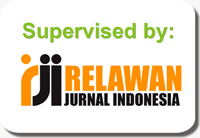Fast Prediction of Medium Voltage Network Disturbances using Knowledge Growing System (KGS) Method
DOI:
https://doi.org/10.31961/eltikom.v7i2.573Keywords:
Intelligent agent, Knowledge Growing System, fast fault predictor, power distribution faultAbstract
With the increasing demand for electrical energy in the household and industrial sectors, reliability in the distribution of electrical energy is very important. Disturbance in electricity distribution is a routine problem that will always occur in the field. To improve the quality of service, readiness in overcoming distribution disturbances is needed, for example by knowing the disturbances that will occur in the field. This study was conducted to solve this problem by applying the Knowledge Growing System (KGS) method in predicting the type of electricity distribution disturbance that occurred in the PLN unit. In this study, the scope of the research object is limited to PLN units in the South Surabaya area. This prediction is done by recognizing the pattern of disturbances that occur every month based on data taken in 2020. This method was chosen because it is an intelligent agent that can generate its knowledge through observing certain phenomena so that it can produce its own knowledge in making predictions. In this study, 5 patterns of electrical disturbances were used at the location of the electricity distribution. From the results of calculations and analysis using the KGS method, it was found that the prediction of electrical distribution disturbances in the form of animal disturbances with the highest degree of confidence value (DoC) occurred at the Sukolilo substation of 34.77%. Predictions of other disturbances in the form of "material" disturbances occur in Rungkut, Waru, and Darmo Grand feeders with DoC values ​​of 28.33%, 29.72%, and 34.72%, respectively.
Downloads
References
M. S. Sungkar, O. Somantri, M. T. Qurohman, V. K. Bakti, and R. Rahim, “A proposed method using neural network for electricity price prediction base on genetic algorithm,†in Journal of Physics: Conference Series, IOP Publishing, 2019, p. 12063.
Sekretariat PT PLN (Persero), PLN Statistik 2020. Sekretariat PT PLN (Persero), 2021.
Sekretariat PT PLN (Persero), PLN Statistik 2019. Sekretariat PT PLN (Persero), 2020.
S. Kamarani, I. Supriyadi, Y. D. Kuntjoro, and M. F. Rozi, “Implementation of the ASEAN Power Grid Interconnection West Kalimantan and Sarawak to Fulfill Electrical Energy Needs in Khatulistiwa,†Int. J. Humanit. Educ. Soc. Sci., vol. 3, no. 3, 2023.
A. D. W. Sumari, A. S. Ahmad, A. I. Wuryandari, J. Sembiring, and F. Sahlan, “An introduction to knowledge-growing system: a novel field in artificial intelligence,†J. Ilm. Teknol. Inf., vol. 8, no. 2, pp. 11–20, 2010.
E. Emidiana, “Prediksi Beban Listrik Jangka Pendek Wilayah Sumbagsel Berbasis Jaringan Syaraf Tiruan,†J. Ampere, vol. 1, no. 1, pp. 14–25, 2016.
A. A. Zakri and H. Firdaus, “Penerapan anfis untuk peramalan gangguan pada transformator daya,†in Prosiding Seminar Nasional Pakar, 2019, pp. 1–3.
K. O. Bachri, U. Khayam, B. A. Soedjarno, A. D. W. Sumari, and A. S. Ahmad, “Cognitive artificial-intelligence for doernenburg dissolved gas analysis interpretation,†TELKOMNIKA (Telecommunication Comput. Electron. Control., vol. 17, no. 1, pp. 268–274, 2019.
M. T. Andi Syofian, “Analisa Perhitungan Titik Gangguan pada Saluran Transmisi Menggunakan Metode Takagi Aplikasi PT. CHEVRON PACIFIC Indonesia,†J. Tek. Elektro, vol. 6, no. 2, pp. 204–208, 2017.
E. R. Puspitaningtyas, S. Nisworo, and A. Trihasto, “Prediksi Sisa Usia Pakai Arester Zno Transformator Utama Berdasarkan Pengukuran Arus Bocor Resistif Korektif Menggunakan Metode Regresi Polinomial,†in SENASTER" Seminar Nasional Riset Teknologi Terapan", 2020.
A. D. W. Sumari, D. R. H. Putra, M. B. Musthofa, and N. Mari, “Pandemic dynamics prediction in Java using the Moving Average method and the Knowledge Growing System (KGS),†J. Teknol. dan Sist. Komput, vol. 9, no. 1, pp. 31–40, 2021.
K. O. Bachri, B. Anggoro, A. D. W. Sumari, and A. S. Ahmad, “Cognitive Artificial Intelligence method for interpreting transformer condition based on maintenance data,†Adv. Sci. Technol. Eng. Syst. J., vol. 2, no. 1, pp. 1137–1146, 2017.
I. H. Kusumah, “Knowledge Growing System Implementation on Design of Unmanned Aerial Vehicle in Maritime Security Monitoring,†in 2019 5th International Conference on Computing Engineering and Design (ICCED), IEEE, 2019, pp. 1–6.
A. D. W. Sumari, A. S. Ahmad, A. I. Wuryandari, and J. Sembiring, “Brain-inspired knowledge-growing system and its application in biomedical engineering: inferring genes behavior in genetic regulatory system,†J. eHealth Technol. Appl., vol. 8, no. 2, pp. 141–151, 2010.
A. D. W. Sumari, A. S. Ahmad, A. I. Wuryandari, and J. Sembiring, “Knowledge growing system: a new perspective on artificial intelligence,†in Proceedings of the 5th International Conference Information & Communication Technology and System, 2009, pp. 217–222.
Q. Fitriyah and D. Istardi, “Prediksi Beban Listrik Pulau Bali Dengan Menggunakan Metode Backpropagasi,†in Seminar Nasional Informatika (SEMNASIF), 2015.
B. Handoko, “Peramalan Beban Listrik Jangka Pendek pada Sistem Kelistrikan Jawa Timur dan Bali Menggunakan Fuzzy Time Series,†TugasAkhir, JurusanTeknikElektro, ITS, Surabaya, 2010.
Downloads
Published
How to Cite
Issue
Section
License
Copyright (c) 2024 Jurnal ELTIKOM : Jurnal Teknik Elektro, Teknologi Informasi dan Komputer

This work is licensed under a Creative Commons Attribution-NoDerivatives 4.0 International License.
All accepted papers will be published under a Creative Commons Attribution 4.0 International (CC BY 4.0) License. Authors retain copyright and grant the journal right of first publication. CC-BY Licenced means lets others to Share (copy and redistribute the material in any medium or format) and Adapt (remix, transform, and build upon the material for any purpose, even commercially).




